QUESTIONS PARENTS MIGHT WANT TO ASK THEIR PHYSICIANS:
Question 1: We have learned of Dr. Geert Vanden Bossche’s deep concern and strong opinion that the COVID vaccination campaign has been unwise and should be stopped immediately because: a rapid mass vaccination campaign, using a sub-optimal vaccine (like the COVID vaccines) and vaccinating across all age groups, in the midst of an active pandemic of a highly mutable and highly infectious respiratory virus— is a recipe for abnormally generating a prolonged series of dominating new variants that become increasingly infectious, increasingly vaccine-resistant (i.e., resistant to potentially neutralizing vaccinal antibodies), and inevitably more virulent. In other words, the mass vaccination campaign is responsible for prolonging the COVID pandemic and making it more dangerous, according to Dr. Vanden Bossche. Is this true? Are Dr. Vanden Bossche’s concerns appropriate? Are his predictions likely to play out? He seems very knowledgeable, very credible, and very concerned. Do you agree with him?
Response: Dr. Vanden Bossche’s concerns are based on a deep understanding of the complex immunology, virology, vaccinology, evolutionary biology, molecular biology, and molecular epidemiology involved in the COVID situation—as well as decades of practical, high-level experience in the vaccine industry and a deep dive into the medical literature on COVID. In addition, his writings are driven by a deep concern for Humanity, especially for children. In my view he is clearly honest, authentic, well-informed, and altruistically motivated. Compared to the information provided by the promoters of the mass vaccination campaign, Dr. Vanden Bossche’s information is deeper, wider, much less simplistic, and much more scientific. Furthermore, so far, his predictions have already played out, and they are likely to continue to do so. All of us can learn a tremendous amount from Dr. Vanden Bossche. I fully agree with and totally support his expressed concerns. It is imperative that the physicians and scientists who have been supporting the prevailing COVID narrative’s mass vaccination campaign thoroughly address Dr. Vanden Bossche’s concerns and explain why they disagree with his scientific explanations for those concerns.
One key to understanding Dr. Vanden Bossche’s concerns is to understand why use of a non-sterilizing (sub-optimal) vaccine in a rapid mass vaccination campaign in the midst of an active pandemic involving a highly infectious and highly mutable respiratory virus is different from using that same vaccine well in advance of a pandemic. Let’s try to explain this one step at a time:
Physicians were initially given the impression that the COVID vaccines produce large quantities of “neutralizing antibodies” that attach to the spike protein of the Wuhan strain of the SARS-CoV-2 virus; fully neutralize the virus; fully (or almost fully) prevent the virus from entering and infecting cells; and, therefore, prevent transmission of virus from one person to another.
[Before reading further, many readers might want to take a few minutes to view Figures 1-23 in the APPENDIX OF MEDICAL ILLUSTRATIONS at the end of this document for visual images of the SARS-CoV-2 virus, its spike protein, how the spike protein enters human cells by attaching to the ACE2 receptor on human cells, and how neutralizing antibodies block that attachment.]
Initially, there was some scientific evidence that the vaccinal antibodies might, indeed, be greatly neutralizing. For example, laboratory studies (in vitro studies, as opposed to in vivo studies in humans) demonstrated that the vaccinal antibodies to the spike protein of the original Wuhan strain were, indeed, neutralizing and did, indeed, impair entry of the Wuhan strain into cells—at least to some extent, at least in the laboratory setting. The exact extent to which these neutralizing antibodies prevented entry of virus into cells in vivo (in live human beings who encountered the virus) was not adequately determined. That is, it was not established whether these neutralizing antibodies completely prevented entry (i.e., 100 %) or only partially prevented entry (e.g., prevented only 80-90%, or a much lower percentage, of the virus from entering cells) when vaccinated humans encountered the virus. This is important, because a vaccine is “optimal” only if it is “sterilizing,” meaning that it results in sufficient containment of the virus in the vaccinated individual (when that individual is encountering the virus), to protect that individual from severe disease and prevent transmission of the virus from that individual to another person. When the virus enters the nose or throat of a vaccinated individual and is adequately contained, this containment occurs either because 100% neutralizing vaccinal antibodies are already present and adequately neutralize the viral load and/or because the normal immune system otherwise quickly contains the virus—such that infection is minimized and transmission is prevented. Vaccines that fail to prevent transmission are “suboptimal.”
It soon became apparent that the “neutralizing” vaccinal antibodies were not adequately preventing infection and transmission of the virus, even when the Wuhan strain was the sole or predominant strain. This was the case for one or more of the following reasons: It is possible that the vaccinal antibodies were never fully (100%) neutralizing in the first place. Neutralizing antibodies (even if 100% neutralizing) are not necessarily sufficient to contain the virus, particularly if the viral load is very high. Other immune mechanisms (e.g., innate immunity mechanisms) are typically needed, in addition to neutralizing antibodies. But, even if the vaccinal antibodies were fully neutralizing, it must also be realized that, after vaccination, it takes the immune system at least 1-2 weeks (often several weeks) before it is able to produce its mature, potentially neutralizing IgG anti-spike antibodies—and, in the meantime, it produces temporary IgM anti-spike antibodies that are immature and only sub-optimally neutralize the virus. Because people were being mass vaccinated in the midst of an active pandemic (i.e., when lots of virus was circulating in communities), it was very likely, statistically, that many people who were vaccinated would encounter the virus while their immune system was producing only sub-optimal IgM vaccinal anti-spike antibodies and before their immune system was able to produce a sufficient quantity of mature potentially neutralizing IgG vaccinal antibodies. So, even if the eventually produced mature IgG anti-spike vaccinal antibodies were fully (100%) neutralizing (which is unlikely), this was a moot point because the immature IgM anti-spike vaccinal antibodies were not fully neutralizing and this fact, alone, would result in infection and transmission.
This, then, resulted in the virus entering cells, replicating, and mutating—in the presence of both immature and eventual mature (and probably not 100% neutralizing) anti-spike vaccinal antibodies. These vaccinal antibodies put tremendous immune pressure on the virus, at a population level, to develop a way to escape these anti-spike antibodies. Viruses with mutations in their spike protein that enabled them to evade the vaccinal antibodies had a “fitness advantage,” regarding survival. Through the Darwinian principles of “natural selection” and “survival of the fittest,” new strains (variants) of the SARS-CoV-2 virus (hereafter referred to as SC-2) developed that could evade the mature and immature anti-spike vaccinal antibodies. [1-17] These variants soon became dominant variants (because they successfully out-competed other variants). This meant that the mature vaccinal antibodies that may have been considerably neutralizing (even if 100% neutralizing) against the Wuhan strain were no longer neutralizing against the new variants (like Delta and Omicron) that had “vaccine-resistant” mutations involving their spike proteins. Even if the vaccinal antibodies were 100% neutralizing against the Wuhan strain, they were no longer adequately neutralizing against the new variants.
The above sequence of events explains why it is clearly accurate to view the COVID vaccines as “suboptimal” vaccines when used in the midst of an active pandemic—even if the mature IgG vaccinal anti-spike antibody was, initially, 100% neutralizing. They were suboptimal even when the Wuhan strain predominated (because they were being given in the midst of an active pandemic, which meant that the virus was being exposed to immature IgM vaccinal antibodies that were only partially neutralizing). They have become increasingly suboptimal as new variants have appeared, against which the potentially neutralizing vaccinal antibodies against the original Wuhan spike protein have become far less neutralizing. (The vaccinal antibodies that were “neutralizing” against the Wuhan strain are now far less neutralizing against the current dominant Omicron variant (BA.4/BA.5).
If the COVID vaccines, with their potentially neutralizing anti-spike antibodies, had been administered in the absence of an active pandemic (i.e., when no SC-2 was around), they might have been at least partially successful as a prophylactic vaccine, and there would be less reason for the above concerns. That is, they might have provided at least some protection when, many months later, the vaccinated individual was first exposed to the virus. The vast majority of vaccinated individuals would have had plenty of time to develop mature IgG anti-spike antibodies by the time of their exposure to the virus, and, if those antibodies were fully neutralizing (or nearly so), those antibodies would be considerably protective. This situation would have resulted in less immune pressure on the virus, compared to the pressure exerted by the current COVID mass vaccination campaign—particularly if only the most vulnerable were prophylactically vaccinated. But the problem is that the COVID vaccines have not been used well in advance of a pandemic—they have been used in the midst of an active pandemic—and they have been given across all age groups.
That has been one major problem with the mass COVID vaccination campaign. That is one reason why it has been uniquely unwise and dangerous. A prophylactic vaccine, even if it produces fully (100%) neutralizing antibodies, should never be used in a rapid, mass vaccination campaign in the midst of an active pandemic—for the reasons explained above. This principle—i.e., the interplay between a highly mutable virus and the human immune ecosystem and how that interplay is affected by vaccinal antibodies, at a population level—is what promoters and acceptors of the COVID vaccination campaign do not seem to appreciate. It is a basic principle of virology, immunology, vaccinology, and evolutionary biology, based on principles Darwin taught us 160 years ago.
To summarize, Dr. Vanden Bossche is not claiming that COVID vaccines have never been capable of producing a potentially neutralizing and potentially effective anti-spike antibody, nor is he claiming that such COVID vaccines could not be somewhat effective if they were administered well in advance of a pandemic. He is warning that use of these vaccines in a rapid mass vaccination campaign across all age groups, in the midst of an active pandemic involving a highly infectious, highly mutable respiratory virus is a recipe for great regret—because, in this setting, the vaccines are suboptimal, allow considerable infection and transmission, put immense immune pressure on the virus, and this results in the natural selection of variants with mutations that allow them to escape the immune pressure. [1-17] A prolonged series of dominant “immune escape” variants results, with each new variant becoming more infectious than its predecessor and with variants eventually becoming more virulent. I fully agree with this concern. The promoters of the current mass COVID vaccination campaign have not provided a scientifically-sound argument against this concern, and I think they will be unable to do so. They have ignored Dr. Vanden Bossche’s concerns and warnings—which he first brought to the attention of the WHO, CDC, and NIH in March 2021.
Finally, I hasten to again emphasize that an “optimal” immune response involves much more than simply producing “neutralizing” antibodies, even if those antibodies are 100% neutralizing. An “optimal” immune response involves utilization of all of the potential immune capacities that might be needed to contain the virus and prevent transmission—e.g. natural antibodies and NK cells of the innate immune system, etc. There is much more to the story (of immune protection) than the levels of neutralizing antibodies. It is simplistic and misleading to focus only on “levels of neutralizing antibodies.” The enormous importance of a well-trained innate immune system has been greatly under-emphasized by proponents of the mass vaccination campaign, as has the importance of the well-orchestrated collaborative effort that normally occurs between the innate and adaptive immune system. That is why the comprehensive and collaborative natural immune response is much more protective than antibodies alone.
Question 2: As parents, we would like to better understand the difference between the COVID vaccines and the usual childhood vaccines—such as the MMR, polio, chicken pox, Hemophilus influenzae B (HIB), and meningococcal vaccines. Although Dr. Vanden Bossche has warned that the COVID vaccination campaign has been unwise (for the reasons mentioned in Question 1, as well as other reasons), he thinks the usual childhood vaccines have been and still are wise—is that correct? Could you further clarify Dr. Vanden Bossche’s thoughts on this issue. Is the difference primarily (even solely) that the usual childhood vaccination programs have not represented examples of “rapid mass vaccination, across all age groups, using a suboptimal vaccine, in the midst of an active pandemic, involving a highly mutable and highly infectious respiratory virus?” Or are there other differences as well?
Response: You are correct—that Dr. Vanden Bossche is a strong supporter of thoughtful, careful childhood vaccination. He has devoted his entire career to development of safe and effective, judiciously used vaccines. He would insist, however, that all vaccines be honestly and altruistically developed and based on impeccably rigorous practice of science and concern for both short- and long-term safety, both at the individual level and at the population level.
I am also a supporter of thoughtful, careful childhood vaccination. I spent much of my pediatric residency (in the early 1970s) taking care of infants and toddlers who were being devastated by Hemophilus influenzae B meningitis. The subsequently developed Hemophilus influenza B (HIB) vaccine has dramatically reduced the incidence of Hemophilus sepsis and meningitis. Prior to the HIB vaccine 20,000 young children in the USA developed life-threatening Hemophilus B infection each year, and 1000 of those children (5%) died. Now severe Hemophilus B infection occurs in only 50 children annually in the USA. That represents a spectacular achievement. It would be a shame to return to the days of 20,000 severe infections per year!!
You are also correct—that an important difference between the usual childhood vaccines and COVID vaccines is that the childhood vaccines are not being given in the midst of an active pandemic. They are being used prophylactically—i.e. well in advance of the potential exposure. Since they are being used well in advance of the potential exposure, the vaccinated child’s immune system has usually had ample time to produce an ample amount of mature neutralizing antibody—so that when/if the child is exposed to the infectious agent the child has mature IgG vaccinal antibodies readily available.
But there are other major differences. Several of the usual childhood vaccines (e.g. the vaccines against measles, rubella, mumps, polio, and chicken pox) represent live-attenuated, replication-competent, prophylactic vaccines that result in sterilizing, long-lasting (even life-long) immunity and contribute to herd immunity. “Live-attenuated” means that the whole virus is used in the vaccine but its replication ability (within human cells) is either completely restricted (replication-incompetent) or markedly restricted (replication-competent but considerably subdued), such that the attenuated virus is either completely unable to cause disease in the vaccinated individual or is very unlikely to cause disease in the vaccinated individual. “Replication-competent” means that the live-attenuated virus can still replicate within human cells but at a much-subdued and usually safe rate. So, there are “live-attenuated, replication-incompetent” vaccines (i.e. replication is completely restricted) and there are “live-attenuated, replication-competent” vaccines (i.e. the attenuated virus is still able to replicate at a subdued and usually safe rate). “Sterilizing” immunity means that the immunity provided by the vaccine adequately contains the virus and prevents transmission.
The measles, rubella, mumps, polio (oral), and chicken pox vaccines are live-attenuated, replication-competent vaccines that are used prophylactically (meaning well in advance of anticipated exposure).
Live-attenuated, replication-competent vaccines are the most effective and durable vaccines that have so far been produced by the vaccine industry. These vaccines closely mimic natural infection, and stimulate a comprehensive immune reaction, involving both innate and adaptive immunity. Because they result in sterilizing, long-lasting immunity, they contribute to herd immunity.
The live-attenuated, replication-competent vaccines are much more “optimal” than the COVID vaccines. The COVID vaccines are not live-attenuated, replication-competent, sterilizing vaccines. The COVID vaccines are sub-optimal. They do not stimulate a comprehensive immune response. Instead, they stimulate a narrow antibody response. They do not prevent infection of human cells. They do not prevent transmission. They do not provide sterilizing immunity, and they do not contribute to herd immunity. And when used in the midst of an active pandemic involving a highly transmissible and highly mutable virus the COVID vaccines actually increase viral infectiousness, prolong the pandemic and make it more dangerous. (See Question 5.)
So, there are huge differences between the usual childhood vaccines and the COVID vaccines. Dr. Vanden Bossche’s greatest concerns about the COVID vaccines do not apply to the usual live-attenuated, replication-competent childhood vaccines. He, in fact, has great respect for the benefits of properly developed, properly tested, properly used childhood vaccines. In his view, the herd immunity created by the usual childhood vaccines—-for example, the live-attenuated, replication-competent vaccines (MMR, oral polio, chicken pox vaccines) and HIB vaccine—have been extremely important and life-saving for children. If these vaccines were stopped, herd immunity would ultimately be lost and many would suffer before herd immunity could be re-established by resumption of vaccination.
For completeness, let us explain that there are childhood vaccines that fall in-between the sub-optimal COVID vaccines at one end of the spectrum and the much more optimal live-attenuated, replication-competent vaccines at the other end of the spectrum. We have already mentioned live-attenuated, replication-incompetent vaccines, which are safer than the live-attenuated, replication-competent vaccines but considerably less effective. There are “inactivated” whole virus vaccines which use a killed version of the virus, which assures a complete loss of replication ability, but are less effective and less durable than live-attenuated, replication-competent vaccines—e.g. the Hepatitis A vaccine, influenza vaccines, the polio shot (as opposed to oral polio vaccine), and rabies vaccine. There are “sub-unit, recombinant, polysaccharide, conjugate” vaccines that use pieces of dead virus (or bacterium)—e.g. Hemophilus influenza (HIB) vaccine, Hepatitis B vaccine, pneumococcal vaccine, meningococcal vaccine, and whooping cough vaccine. And there are toxoid vaccines, such as Diphtheria and tetanus vaccines.
So, not all vaccines are the same. The COVID vaccines, and particularly the situation in which they are being used (i.e., in the midst of a pandemic), are completely different from the usual childhood vaccines. For the reasons explained above, Dr. Vanden Bossche is a strong advocate for properly developed and tested usual childhood vaccines, while being a strong advocate against the COVID vaccines.
To summarize: Compared to the COVID vaccines, the usual childhood vaccines (particularly the live-attenuated, replication-competent vaccines) are much more sterilizing (even completely sterilizing), much more optimal, much more effective, much more durable, much more capable of contributing to herd immunity, and much safer than any of the COVID vaccines.
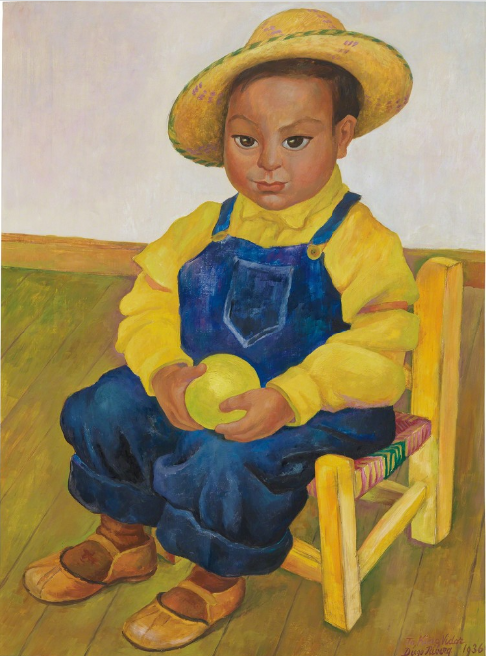
Question 3: What about the influenza vaccines? Why would an annual influenza vaccination campaign be wise, but the mass COVID vaccination campaign be unwise? Is it because, compared to the COVID vaccination campaign, the annual flu vaccination campaign is not as massive, does not involve vaccination across all age groups (it is primarily given to the elderly and most vulnerable), and is not being given in the midst of a huge widespread pandemic? Are the influenza vaccines somehow more effectively neutralizing or more persistently neutralizing than COVID vaccines?
Response: You are partly correct—compared to the COVID vaccination campaign, the annual flu vaccination campaign is not as massive, does not involve vaccination across all age groups (it is primarily given to the elderly and most vulnerable), is not being given in the midst of such a large amount of circulating virus, and vaccinees are often receiving their vaccination well in advance of anticipated exposure. The influenza vaccines, however, are not considerably more effectively neutralizing or more persistently neutralizing than the COVID vaccines.
However, some of Dr. Vanden Bossche’s concerns about the mass COVID vaccination campaign also apply to the flu vaccine campaign, though to a less dramatic extent. We would be wise, for example, to re-evaluate whether the flu vaccines (which are sub-optimal non-replicating/inactivated virus vaccines) have been promoting the dominant propagation of more infectious and/or more virulent dominant strains that have emerged as a result of antigenic shift/ drift and have been adversely affecting the population’s herd immunity. Perhaps, we would be better off by now, if only a small percentage of people (the very most vulnerable), at most, were to have received the flu vaccines, annually, over the past several decades. This issue requires much more study than has occurred to date. The decades long vaccination campaign against influenza viruses needs to be re-evaluated.
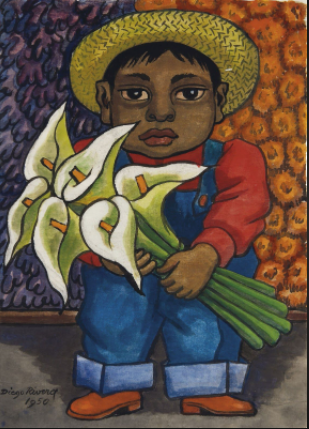
Question 4: Dr. Vanden Bossche has been greatly concerned that the vaccinal antibodies (the anti-spike antibodies that are produced after COVID vaccination) interfere with a child’s innate immunity. He says the vaccinal antibodies “out-compete” the child’s innate “natural antibodies” and more or less sideline the child’s innate immune system. He thinks the vaccinal antibodies interfere with the normal practice and normal development of the child’s innate immune system. Is this correct? What are “natural antibodies?”
Response:
There is a large body of scientific evidence regarding the importance and function of the innate immune system’s “natural antibodies” (or “innate antibodies”) [18-24] We have known about innate antibodies since the early 1960s. Since then, however, their importance has largely gone under-appreciated and inadequately emphasized. Fortunately, that is now changing.
Innate antibodies are nonspecific—meaning that they are capable of binding (with low affinity) to many different viruses. This enables them to play a key role, as “first responders,” to quickly neutralize viruses in general.
Through repeated interaction between innate antibodies and glycosylated viruses (like SC-2 and many other respiratory viruses) the innate immune system gains education, practice, and experience in recognizing and appropriately attacking threatening viruses. Through continuous re-interaction between innate antibodies and viruses (and glycosylated agents in general), the innate immune system also becomes trained and practiced in recognizing what it should attack (non-self) and what it should leave alone (self). Without sufficient training and practice in distinguishing between “self” and “non-self,” the innate immune system is prone to autoimmune reactions (inappropriate immune attack on parts of one’s own body).
The above interaction between innate antibodies and viruses eventuates in the ongoing functional reprogramming (including frequent updates) of cell-mediated innate immunity (via epigenetic changes).
Early childhood is the time when the innate immune system receives the most important and greatest amount of the education, practice and experience mentioned above. Accordingly, it is particularly important to protect the normal interaction between innate antibodies and viruses during this critical time of optimal, foundational education of a young child’s innate immune system. It is also important to protect the normal interaction between innate antibodies and viruses during the continuing education of the innate immune system that occurs throughout adulthood.
There is scientific evidence that COVID vaccinal antibodies out-compete innate antibodies for binding sites on the virus and, thereby, interfere with normal interaction between innate antibodies and viruses. (Vaccinal antibodies bind strongly to viruses, whereas innate antibodies, by design, bind less tightly to viruses.) The result is interference with the normal on-going education, practice, and overall function of the innate immune system. This interference is particularly regrettable and consequential if it occurs during the most optimal time for education and practice of the innate immune system—namely, during early childhood.
This harmful vaccinal interference with the binding of innate antibodies to SC-2 lasts for as long as the titers of spike-specific vaccinal antibodies are elevated, which inevitably occurs when vaccinated (primed) individuals are continuously (or frequently and repeatedly) exposed to highly infectious SC-2 variants (e.g., Omicron variants) or receive “booster doses” of COVID vaccine.
When vaccinal antibodies (from COVID vaccination) impair a person’s innate immune system, this renders the person less able to handle viruses in general (not just SC-2) and predisposes the person to autoimmune disease. This adverse effect of COVID vaccinal antibodies on the development and practice of a person’s innate immune system is particularly detrimental if the COVID vaccine is given to young children. This adverse effect of COVID vaccination of young children is irreversible.
To better appreciate what is meant by “irreversible,” consider the following helpful (though imperfect) analogy: Think of a person’s learning of a second language. It is easiest to learn a second language if that language is taught and practiced during early childhood, when the developing brain is very nimble and easily “imprintable.” It is much harder to learn a second language later in life. So, there is a critically important and limited time (early childhood) during which learning a second language is easiest and most successful. That critical “imprinting” period occurs only once during a person’s life (during early childhood). If that greatest opportunity to learn a second language is missed (or disrupted), it is irretrievably lost. That does not mean that that person cannot learn a second language later in life, but without a solid, foundational second language education during early childhood, it is much more difficult to become fluent in a second language later in life.
Similarly, the greatest opportunity for a person’s innate immune system to receive an excellent, “imprinting” education is during early childhood. That critical period occurs only once during a person’s life (during early childhood). If that greatest opportunity to optimally “imprint” one’s innate immune system is missed (or disrupted), it is irretrievably lost. The innate immune system can still learn during later childhood and adulthood, but the learning will be more difficult and less successful. The COVID vaccines interfere with the foundational education of the innate immune system (during early childhood) and also interfere with continuing education throughout adulthood.
For the above reasons, we should particularly avoid COVID vaccination in young children!!
[Note to Physicians: Why and how would vaccinal interference with interaction between innate antibodies and a specific virus (like SC-2) affect the overall education of the innate immune system, regarding how to respond to other viruses and how to distinguish between non-self and self? This is complex but has to do with shared molecular patterns that many viruses have in common and that are also similar to molecular patterns (“self” patterns) on components of the human body. Innate antibodies enable upregulation of virus-derived “self-mimicking” peptides on infected cells at an early stage of infection. These patterns have a high level of amino acid homology across glycosylated viruses that cause acute self-limited infection or disease. Once the innate effector cell (NK cell) has been educated to “broadly” recognize such patterns, it can then upon subsequent encounters “fine tune” its recognition to better spot and target the virus it actually has to deal with. That is what is called “training” (which occurs via epigenetic changes enabling functional reprogramming of educated NK cells.]
See Take-Home Messages 3, 8, and 12e for summarizing discussion of these issues. Also, see Section 5, in the Open Letter—Part II: https://notesfromthesocialclinic.org/open-letter-to-parents-and-pediatricians-part-ii-a-review-and-update/
Also, see the following link: https://videos.bozeken.com/downloads/geert/1st%20video/070122%20Geert%20Vince.mp4
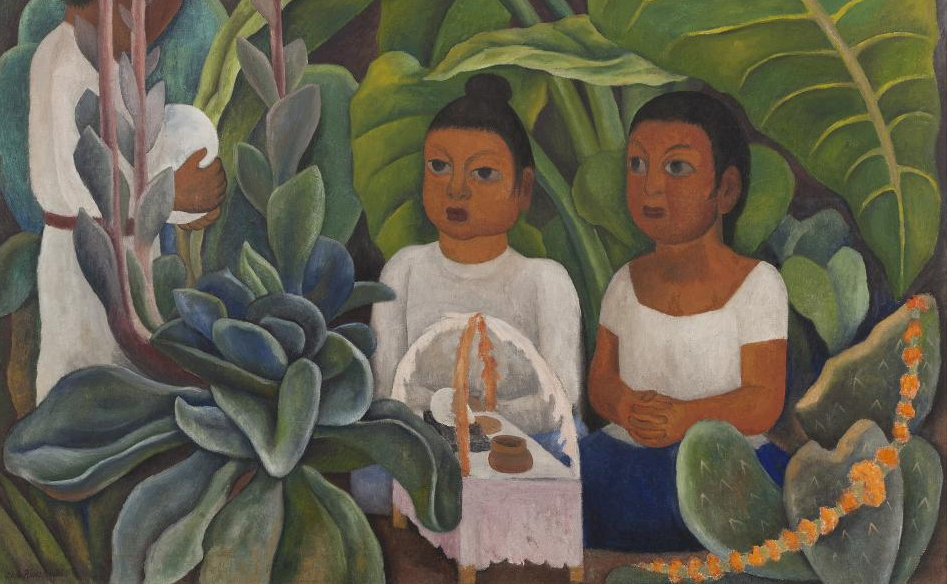
Question 5: Dr. Vanden Bossche says the mass COVID vaccination campaign is responsible for the virus becoming more infectious, particularly for the vaccinated, and may soon be responsible for the virus becoming more deadly. How does COVID vaccination make the virus more infectious and eventually more virulent (deadly)? He says the vaccinal antibodies, currently, are providing some protection against severe disease, but that this will soon change and cease to be the case. Is all this true?
Response: In two different ways the COVID vaccination campaign makes the virus more infectious. First, the COVID vaccination campaign puts tremendous immune pressure on the virus and this leads to the natural selection of mutations that enable a variant (intrinsically) to escape the anti-spike antibodies and more easily enter (infect) cells. [1-17] Second, it should be realized that the COVID vaccines result in the production of more than one anti-spike antibody. The vaccines result in production of not only neutralizing anti-RBD (receptor binding domain) antibodies, but also production of separate non-neutralizing anti-spike antibody that is directed against the N-Terminal Domain (NTD) of the spike protein. (See Figures 5, 7, and 16 in the APPENDIX OF MEDICAL ILLUSTRATIONS.) As the neutralizing capacity of the vaccinal neutralizing antibodies declines (as the virus mutates in a direction that makes it increasingly resistant to the neutralizing vaccinal antibodies) the vaccinal non-neutralizing antibodies are able to bind more tightly to their targets on the NTD of the spike protein, and this results in a conformational change in the RBD of the spike protein that enables the virus to more easily attach to the ACE2 receptor and enter (infect) cells. (See Figures 8, 9, 16, 21, and 22 in APPENDIX OF MEDICAL ILLUSTRATIONS.) More specifically, that conformational change places the RBD in an “open” position (Figures 8, 9, 21, and 22) and this favors entry of the virus into the cell. In this way, non-neutralizing vaccinal antibodies facilitate entry of virus into cells—i.e., the vaccinal non-neutralizing antibodies make the virus more infectious than if these non-neutralizing antibodies were not present or not present in particularly high quantity. [13-17] This antibody-mediated facilitation of viral entry into cells represents an example of “antibody dependent enhancement of infection (ADEI).”
Although the vaccinal non-neutralizing antibodies increase viral infectiousness, they, at the same time, are currently providing some protection against disease severity. This is because these same non-neutralizing antibodies impair the disease worsening processes of dendritic cell-mediated trans-infection, trans-fusion, and syncytia formation deep in the lungs and in the internal organs of the body. [25, 26] For further explanation, see Dr. Vanden Bossche’s article: https://www.voiceforscienceandsolidarity.org/scientific-blog/predictions-gvb-on-evolution-c-19-pandemic
Unfortunately, though, this current beneficial effect of the non-neutralizing vaccinal antibodies will disappear when new viral mutations enable a variant to escape this beneficial effect of the non-neutralizing antibodies. Once that happens, the new variant will be more virulent (more deadly)!! It is likely that a new more virulent variant will soon appear on the scene, if such has not already occurred.
So, that is how the mass COVID vaccination campaign can result in the virus being more infectious [13-17] and eventually more virulent [25, 26]. For further discussion please see sections 3 and 4 in Open Letter—Part II.
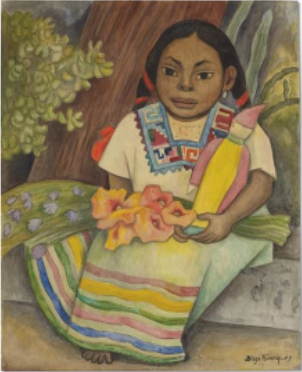
Question 6: Compared to an unvaccinated child, is a vaccinated child now more likely to become infected with the current predominant COVID variant? Does vaccination, now, increase the likelihood of infection?
Response: For the reasons discussed under Question 5, Dr. Vanden Bossche is concerned that vaccinated children (compared to unvaccinated children) are now more likely to become infected with the current variant—because the COVID vaccines are unable to neutralize the current spike protein, and the non-neutralizing vaccinal antibodies are now facilitating viral entry into cells. I agree with this concern.
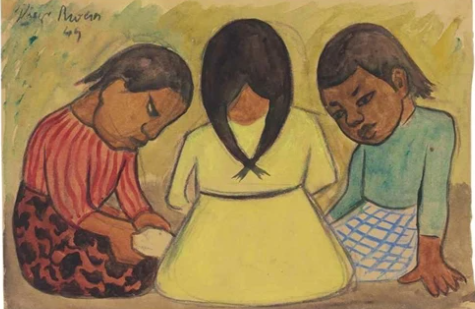
Question 7: Compared to an unvaccinated child who becomes infected with the current SC-2 variant, will a vaccinated child who becomes infected with the current variant have less severe disease—i.e. lower risk of hospitalization and death? If this is currently the case, will this continue to be the case once a more virulent variant appears? Even if this is currently the case, how long does this protection last—just a few weeks? A few months? Many months? Once a more virulent variant appears, will an unvaccinated child be better off than a vaccinated child—both in terms of likelihood of getting infected and likelihood of severe disease? When/if a more virulent variant appears, will vaccinated children be worse off—more likely to become infected and more likely to have severe disease (because of detrimental effects of vaccinal immunity)?
Response: Currently, a vaccinated child has one reason to possibly be at less risk for severe disease and several reasons to be at greater risk for severe disease. As mentioned under Question 5, the non-neutralizing vaccinal antibodies might currently be providing some brief protection against severe disease. There is great concern, however, that the vaccinal antibodies, on the other hand, facilitate entry of virus into cells (which makes the vaccinated child, or adult, more likely to become infected) and interfere with the function, practice, and development of a child’s innate immunity. This interference with innate immunity makes it more difficult for the child’s innate immunity to contain the virus when it enters the upper respiratory tract.
Another problem with the COVID vaccines is that they “prime” the immune system to repeatedly respond (to future SC-2 encounters) in a relatively one-dimensional, narrow, inflexible, increasingly outdated way that emphasizes adaptive immunity in the systemic compartment, focuses on narrow antibody production (rather than a more comprehensive and effective immune reaction), and sidelines innate immunity.
On top of this there is legitimate concern that the mass vaccination campaign is likely to cause “immune exhaustion” in the vaccinated, because of the following sequence of events: As discussed earlier, the mass vaccination campaign has created a situation in which one new variant after another has become dominant. Each new variant has been more infectious than its predecessor, particularly for the vaccinated, even more so for the frequently boosted. The new dominant variants have appeared at increasingly shorter intervals. The end result of this sequence of vaccine-created events is that many individual vaccinated people (particularly the frequently boosted) are increasingly experiencing one “breakthrough” SC-2 infection/re-infection after another. This puts great and abnormally frequent pressure on those people’s immune systems, as they repeatedly battle against these re-infections, and those immune systems are having to go to battle while their innate immune system is being impaired by vaccinal antibodies. This is exhausting for the immune system and leads to “immune exhaustion” (at the CD8+ cytolytic T cell level, in particular) and overall immune dysfunction that renders the vaccinated individual (particularly the frequently vaccinated and frequently re-infected, and those who are elderly or otherwise are more vulnerable) abnormally susceptible to many infections (not just SC-2, but also reactivation of EBV, CMV, HIV, TB, etc.) and even to malignancy.
So, at the present time, the possible short-term beneficial effect of the non-neutralizing antibodies (on disease severity) is not greater than the several detrimental effects of vaccinal antibodies. The just-mentioned detrimental effects of the COVID vaccines currently far outweigh any short-term beneficial effects of the vaccine. Even if the beneficial effects of the vaccine were currently somewhat greater than the combined detrimental effects (which is very unlikely), those beneficial effects wear off after only several weeks or a few months. Currently, the combination of short- and long-term detrimental effects of COVID vaccination far outweigh the current, brief, short term benefit.
More importantly, though, when a more virulent variant appears on the scene (due to the reasons mentioned under Question 5) the vaccinal non-neutralizing antibodies will no longer provide any beneficial effect on disease severity. At that point, the unvaccinated child will be far better off than the vaccinated child. The unvaccinated child will not have the high quantities of vaccinal non-neutralizing antibodies that facilitate viral entry into cells; the unvaccinated child will not have an innate immune system that has been impaired, undermined by vaccinal antibodies; the unvaccinated child’s immune system will not have been “primed” to repeatedly respond in an outdated, narrow way; and the unvaccinated child will have been spared from “immune exhaustion.” The unvaccinated child will have normal innate immunity to better fight SC-2 variants and viruses in general. The unvaccinated child’s entire immune system will be free to respond in its normal, marvelous way.
It is understandable that parents are eager to protect their children from severe disease. However, as the above paragraphs explain, the combination of short- and long-term detrimental effects of COVID vaccination far outweigh the current, brief, short term benefit—a benefit that will soon disappear when a more virulent variant appears.
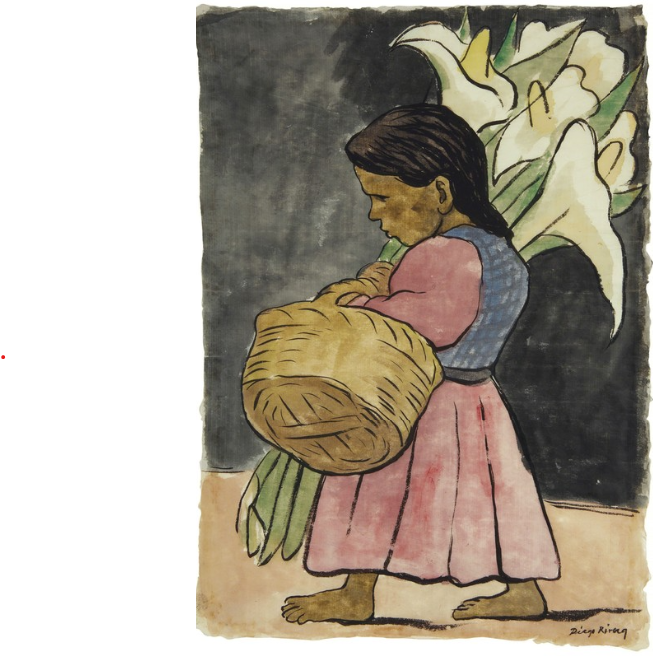
Question 8: To what extent do the answers to questions 6 and 7 depend on the degree to which the vaccinated or unvaccinated child had already developed naturally acquired immunity to COVID (from natural infection in the past) before vaccination (in the case of the vaccinated child) or before the unvaccinated child encounters a current or future variant?
Response: This very likely makes an important difference. With the current variant and with a future more virulent variant, unvaccinated children are better off if they have already had exposure to the SC-2 virus in the past and have developed robust natural immunity to that past variant. That naturally acquired immunity to a past variant will help them to immediately at least partially counter a new variant, including a future more virulent variant. Plus, their more flexible immune system (uninfluenced, un-primed by exposure to the COVID vaccines) will be able to adjust well and mount a new and comprehensive response to new variants. Compared to the just-mentioned unvaccinated child, an unvaccinated child who has never developed naturally acquired immunity from past natural infection will be less able to handle current variants and future more virulent variants but will still be able to handle both variants quite well.
On the other hand, compared to unvaccinated children, vaccinated children, regardless of whether they have naturally acquired immunity to SC-2 in the past, will be less well off because of the several detrimental effects of vaccinal antibodies (as discussed under Questions 5, 6, and 7) and because the modest and temporary beneficial effects of the vaccinal non-neutralizing antibodies will be less than the several detrimental effects of the vaccinal antibodies, and this beneficial effect of non-neutralizing vaccinal antibodies will disappear once a more virulent variant appears. Compared to a vaccinated child who had never naturally acquired immunity to SC-2 prior to vaccination, a vaccinated child who did naturally acquire immunity to SC-2 prior to being vaccinated will probably be better off (both currently and when a more virulent variant appears) because that child at least has some naturally acquired immunity upon which to rely.
So, the children who are best off (currently and in the event of a more virulent variant) are those who have never been vaccinated and have already naturally acquired at least some immunity to SC-2 due to past exposure to current or past variants. The child in the worst position will be a child who has been vaccinated and did not have any naturally acquired immunity prior to being vaccinated. This will be particularly true when a more virulent variant appears.
Our knowledge about this has been hampered by the fact that the status of people’s prior immunity against COVID, before they were vaccinated, has not been routinely or adequately determined. In fact, when people have been vaccinated, virtually no attention has been paid to whether they have already naturally acquired immunity in the past. However, it is helpful to know that, according to the CDC, about 75% of children and adolescents now have evidence of a previous SC-2 infection, which confers some degree of naturally acquired immunity. https://publications.aap.org/aapnews/news/20170?autologincheck=redirected
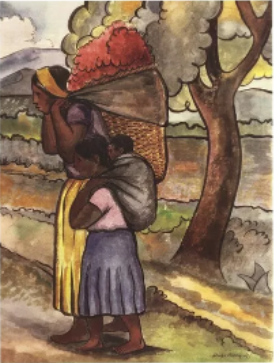
Question 9: If an unvaccinated child has already developed strong naturally acquired immunity to SC-2 (from natural infection in the past) and then receives the COVID vaccine, will that child be better off (having obtained both vaccinal immunity and previous naturally acquired immunity—so called “hybrid immunity”) than if that same child had remained unvaccinated? That is, will vaccination of such a child provide added protection, or do harm?
Response: For the reasons mentioned under Question 8, such a child will probably be worse off (once vaccinated) regarding current SC-2 variants and will definitely be worse off once a more virulent variant appears. Once a more virulent variant appears, the vaccinal antibodies will provide no benefit and will provide only negative effects—such as increased infectiousness of the virus, impairment of innate immunity, an unfortunate narrow “priming” of the immune system, and the possibility of “immune exhaustion.” So, COVID vaccination of a child who already has naturally acquired immunity (from previous SC-2 infection) will not provide added protection. On the contrary, vaccination of such a child renders that child more susceptible to infection and severe disease, particularly when a more virulent variant appears. (Vaccination would needlessly boost titers of antibodies, and this makes such a child more susceptible to enhanced infection and enhanced disease severity upon exposure to a new variant.)
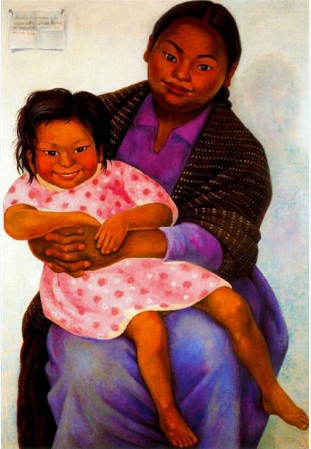
Question 10: Before a child is given the vaccine, is it possible to check their blood, first, to determine the extent to which they have already developed robust natural immunity to SC-2? Should this not be routinely done?
Response: To a limited extent it is possible to do so. People who have developed naturally acquired immunity may or may not have developed anti-nucleocapsid antibody in the process. (See Figure 23 in APPENDIX OF MEDICAL ILLUSTRATIONS.) The COVID vaccines do not result in anti-nucleocapsid antibody. So, presence of anti-nucleocapsid antibody would indicate past naturally acquired immunity to SC-2. However, some people develop acquired immunity to SC-2 without producing anti-nucleocapsid antibody—so, a negative test for anti-nucleocapsid antibody does not definitely disprove prior infection or prior acquired immunity. Routine testing for anti-nucleocapsid antibody would seem to be wise before vaccination is given.
Unfortunately, other ways of documenting naturally acquired immunity to SC-2 (and distinguishing it from vaccinal immunity) have not been developed. It would be particularly helpful to be able to document the extent to which a person has robust innate immunity against SC-2. Unfortunately, the strength of an individual person’s innate immune system has been difficult to document.
Question 11: Currently, are immunosuppressed children (or otherwise exceptionally vulnerable children) better off if they remain unvaccinated or better off if they become vaccinated (or are already vaccinated)? Which is more protective in the current situation: the innate immunity and the vaccine-naïve adaptive immunity of an unvaccinated child, or vaccine-induced immunity that actually increases viral infectiousness and interferes with innate immunity but provides (currently) some protection against severe disease? Which is more protective when/if a more virulent variant appears: will such children be better off if they remain unvaccinated, or will they be better off if vaccinated?
Response: At the current time, with the current SC-2 variant, unvaccinated immunosuppressed children (or otherwise exceptionally vulnerable children who are not immunosuppressed) are most likely better off if they do not receive COVID vaccination. If such a child is vaccinated, the potentially neutralizing anti-spike vaccinal antibodies will not sufficiently work; the vaccinal non-neutralizing antibodies will likely facilitate entry of virus into the child’s cells; the vaccinal antibodies will interfere with the functionality, practice, and development of the child’s innate immunity; and the vaccinal non-neutralizing antibodies will only modestly (if at all) and briefly protect the child from severe disease. Furthermore, the vaccination “primes” their immune system to repeatedly react (when exposed to SC-2 virus) in an outdated and relatively unidimensional way that promotes production of anti-spike antibodies, rather than a more natural and normal multi-dimensional response. And vaccination will predispose them to more frequent SC-2 re-infection, which, in turn, can lead to “immune exhaustion.” On balance, therefore, the detrimental effects of vaccinating such a child outweigh the minimal (even questionable and certainly short-lived) beneficial effects—particularly in the longer term, but even in the short term.
Once a more virulent variant appears on the scene, the vaccine will provide no benefits and have only detrimental effects. The potentially neutralizing vaccinal antibodies will fail to neutralize the spike protein; the non-neutralizing vaccinal antibodies will likely facilitate viral entry into cells; the vaccinal antibodies will impair the functionality, practice, and development of the child’s innate immune system; the immune system will tend to respond in its “primed” unidimensional way; “immune exhaustion” becomes a risk; and the non-neutralizing antibodies will no longer be providing any protection against severe disease.
If an unvaccinated immunosuppressed (or otherwise exceptionally vulnerable child) is left unvaccinated: they will not have high quantities of non-neutralizing vaccinal antibodies that facilitate viral entry into their cells; they will not have vaccinal antibodies interfering with their innate immunity; their immune system will not be “primed” to repeatedly react in an unfortunately unidimensional way; and they will be spared of vaccine-related “immune exhaustion.” Instead, they will have an unimpaired innate immune system that may well be quite protective (despite their vulnerability) and their immune system will be free to respond in its usual multi-dimensional way (though possibly subdued by their immunosuppression). On balance, even immunosuppressed or otherwise vulnerable children are likely to be better off if left unvaccinated—both regarding current variants and future more lethal variants.
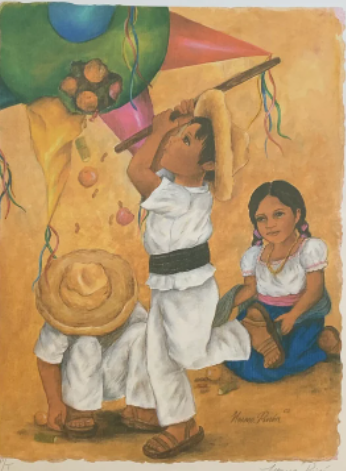
Question 12: Do people who have received COVID vaccination contribute to herd immunity?
Response: No. Herd immunity occurs only when people develop sterilizing immunity to a virus and transmission is prevented. COVID vaccination does not result in sterilizing immunity and prevention of transmission. Instead, the COVID vaccination campaign does the opposite—it increases viral infectiousness and, thereby, increases the quantity of infection circulating in a community. Several of the usual childhood vaccines do result in sterilizing immunity and prevention of transmission, even long duration sterilizing immunity, and, therefore, contribute greatly to herd immunity. Those vaccines are extremely valuable.
Question 13: If development of herd immunity is the only way for a pandemic to come to an end, and if COVID vaccination does not contribute to herd immunity, then which is more socially responsible—to become vaccinated or to remain unvaccinated?
Response: The more socially responsible action is to remain unvaccinated. This is true with regards to recent, current, and future variants. Had this pandemic been managed without the mass COVID vaccination campaign, had it been managed with only selective vaccination of the most vulnerable (at most), the result would have been far fewer cumulative deaths and far fewer poor outcomes than we have seen to date. Individuals who have already been vaccinated, particularly if they continue to receive “booster” injections, are not contributing to herd immunity and, instead, are contributing to the development of more frequent new dominant variants, more infectious variants, and inevitably more virulent variants that then threaten all people (including young children), particularly other vaccinated people.
Question 14: The FDA recently approved Pfizer’s request for emergency use of its COVID vaccine in children between 6 months and 5 years of age. What did the Pfizer study actually reveal, regarding safety and efficacy? What were the data upon which the FDA granted approval? How scientifically sound were those data?
Response: Here is a link to the actual Pfizer study: https://www.fda.gov/media/159195/download
The Pfizer study initially enrolled 4526 children between 6 months and 5 years of age. 3013 were to receive the Pfizer COVID vaccine and 1513 were to receive placebo. The plan was to administer 3 total doses (of either vaccine or placebo) to each child.
Although 4526 children were initially enrolled in the study, the “preliminary descriptive efficacy analysis” (the study’s “vaccine efficacy” data) was based on 1415 children who were at least 7 days past their 3rd dose. Of these 1415 children, 965 were in the vaccinated group and 450 were in the placebo group. It is unclear why this “preliminary descriptive efficacy analysis” was based on data from only 1415 of the 4526 enrolled children.
Of the 1415 children, 10 developed a positive COVID PCR test and were diagnosed with COVID. Unfortunately, no data were provided, regarding the Ct values at which these 10 children’s PCR tests were positive, nor was it mentioned whether any of these 10 positive COVID PCR tests were sent for genomic sequencing to verify that SARS-CoV-2 virus was, indeed, responsible for the positive PCR results. Of these 10 children who developed COVID, 3 were in the vaccinated group and 7 were in the placebo group. These data were the basis for calculating a “vaccine efficacy” of 80.4%.
Of the 4526 patients enrolled in the study, data were provided regarding how many (in the vaccinated group versus the placebo group) developed COVID between doses 1 and 2 and between doses 2 and 3. In the vaccinated group 34 children developed COVID between doses 1 and 2, while only 13 children in the placebo group developed COVID between doses 1 and 2. In the vaccinated group 180 children developed COVID between doses 2 and 3, while 121 children in the placebo group developed COVID between doses 2 and 3.
Of the 2–4-year-old children who were enrolled in the study, 6 developed more than one virologically and clinically confirmed episode of symptomatic COVID. 5 of these 6 were in the vaccinated group. 4 of these 5 had had 3 doses of the vaccine and 1 had had 2 doses. Only 1 child in the placebo group had more than one episode of symptomatic COVID.
Of the children who were enrolled in the study, 8 developed “severe COVID,” which was defined as at least an elevated heart rate or elevated respiratory rate. 6 of these children were in the vaccinated group and 2 were in the placebo group. Of the children enrolled in the study only 1 child was hospitalized, and that child had received 2 doses of the vaccine. No child in the study died.
The above data are scant, inadequate, and do not provide compelling evidence that the Pfizer vaccine was effective in preventing infection, hospitalization, or severe disease.
Although the study concluded that the data “do not suggest any new safety concerns compared with the safety profile described in older age groups,” the median follow-up time was only 2.1 months after the 3rd dose of vaccine. This provides an inadequate length of time to determine safety, particularly long-term safety.
In my opinion, this Pfizer study was too small, too short, and was of insufficient scientific quality to warrant FDA approval of Pfizer’s request for emergency use of its COVID vaccine in children between 6 months and 5 years of age.
Furthermore, given Pfizer’s history of proven, convicted health care fraud and their proven inclination to hide data (see AFTERWORD), their safety and efficacy data should be investigated and scrutinized not just by the FDA, but also by an independent objective panel of representative experts who have no conflicts of interest.
Question 15: Of the potential side effects that vaccinated individuals might experience, which concern you the most? For example, how worried should we be about COVID vaccine-related myocarditis?
Response: In addition to the population level (evolutionary biology level) concerns that we have already discussed—which are sufficient reason and the main reason to halt the COVID vaccination campaign—the COVID vaccines have many potential side effects at the individual level. Chief among these in children is the risk of myocarditis, but there are many other potential short- and long-term risks: blood clots, abnormal bleeding, stroke, neurologic damage, sudden death, impaired development and function of innate immunity (particularly in young children), increased predisposition to autoimmune diseases, vaccine-related reactivation of dormant viruses, vaccine-related immune dysfunction that impairs ability to fight infections in general, and vaccine-related interference with the immune system’s normal cancer surveillance system. The reader is referred to section 5 of the initial Open Letter for an extensive review of COVID vaccine adverse events, including hundreds of specific peer-reviewed published references.
Question 16: Regarding diagnosis of COVID: if a new surge develops, particularly if it involves a more virulent variant, and a person develops symptoms and has a positive COVID PCR test, will it be possible to be told the Ct value at which the test was positive? If not, why not? Why has this information not been routinely available throughout the pandemic?
Response: Throughout the pandemic, data collection and clinical care have been greatly hampered by the fact that the COVID PCR test often yields false positive results (particularly in asymptomatic and minimally symptomatic individuals), and the Ct values of positive results have routinely been withheld. This has meant that when a person is told that their COVID PCR test was positive, neither the patient nor their physician (nor public health officials who collect and analyze data) are told whether the test became positive at a Ct value of, for example, 18 (which would mean a large viral load was present and the person is very contagious) or did not become positive until a Ct value of 38 (which often means that the result either represented a false positive or the test detected a tiny amount of dead viral fragments, which in either case would mean the person is not contagious). Although the Ct value at which a test became positive needs to be interpreted with caution, knowledge of the Ct value is clearly more helpful than simply receiving a binary result (positive or negative) with no information as to how strongly positive a positive result is. It has been very unfortunate that Ct values have been routinely withheld, throughout the pandemic.
It is unclear why Ct values of COVID PCR tests and genomic sequencing of positive PCR results have not been routinely provided.
It is not too late, however, to start routinely collecting data properly for epidemiologic purposes, for clinical research purposes, and for the sake of individual patient care. From now on all patients with a positive COVID PCR test should be informed of the Ct value at which their test was positive, and genomic sequencing (including variant/subvariant identification) should be done when appropriate.
For more information about Ct (cycle threshold) values please see section 6 in the initial Open Letter.
QUESTIONS PHYSICIANS MIGHT WANT TO ASK THEIR PREFERRED INFECTIOUS DISEASE SPECIALISTS:
Question 17: Is Dr. Geert Vanden Bossche’s understanding of immunology, virology, vaccinology, evolutionary biology, epidemiology, molecular biology, and physical chemistry accurate? Are his concerns valid
Response: In my view, Dr. Vanden Bossche’s concerns and conclusions are scientifically solid and absolutely need to be taken seriously. His understandings are deep, and it is imperative that those scientists and physicians who have promoted the mass COVID vaccination campaign enter into respectful, healthy, scientific dialogue about his understandings and concerns. I do not think the promoters of the mass COVID vaccination campaign will be able to refute the scientific bases for Dr. Vanden Bossche’s concerns.
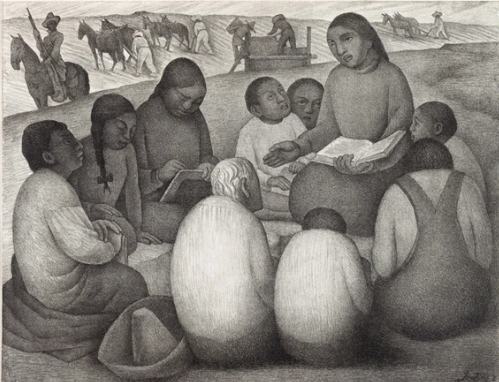
Question 18: From an evolutionary biology standpoint, if Dr. Vanden Bossche is correct, do his concerns apply only to the mRNA vaccines, or do they also apply to the Novavax COVID vaccine and the other available COVID vaccines? Are some of the other COVID vaccines more neutralizing, sterilizing, or optimal than the mRNA vaccines? In other words, from an evolutionary biology standpoint, will all of these COVID vaccines (when used in the midst of an active pandemic) drive the development of more infectious and more virulent variants—and, if so, equally so?
From an efficacy standpoint, do you think some of the COVID vaccines are better than other COVID vaccines? Of the different vaccination platforms used (mRNA, protein subunit, viral vector, inactivated whole virus) which platform do you think is preferable?
Response: From an evolutionary biology standpoint, Dr. Vanden Bossche’s concerns are applicable to all of the COVID vaccines. When given in the midst of a pandemic, all will drive the natural selection of more infectious and more virulent variants.
From an efficacy standpoint, it is difficult to know which specific vaccine or which platform has performed best. This difficulty is primarily due to the scientifically unsound (or at least uncertain) ways in which COVID data have been collected. Without data of excellent quality, it is impossible to draw reliable conclusions.
From a safety standpoint the mRNA vaccines are, by far, the least preferable platform, with the viral vector platform being second least preferable.
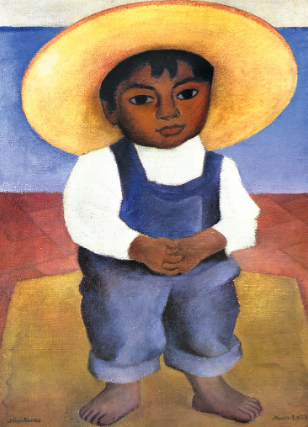
Question 19: Do the currently available COVID vaccines provide any training of the innate and/or adaptive immune systems within the mucosal compartment, or do they only affect the immune system within the systemic compartment? Within the systemic compartment, do the COVID vaccines activate and train only the adaptive antibody-producing pathway (including development of memory B cells for future antibody production), or do they also activate and train the adaptive virus-specific cytolytic T cell pathway (and its memory for future virus-specific cytolytic T cell action)? Do the COVID vaccines activate and train the systemic compartment’s innate immune system, or do the COVID vaccines, in fact, impair/harm the innate immunity in both the systemic compartment and the mucosal compartment?
Response: The COVID vaccines do not educate or give practice to the innate immune system, in either the mucosal or the systemic compartment. In fact, the vaccinal antibodies actually interfere with the functionality, practice and training of the innate immune system—at least that is the net effect. The COVID vaccines have little or no effect on the adaptive immune system in the mucosal compartment. (The systemic vaccinal antibodies can, however, provide some limited protection in the mucosal compartment, via transudation of vaccinal IgG antibodies.)
In the systemic compartment the COVID vaccines train the antibody-producing pathway of the adaptive immune system but there is no evidence that the vaccines induce the immune system to mount a virus-specific cytolytic T cell response that has memory.
However, having said the above, I would want a panel of exemplary immunologists, virologists, and vaccinologists to weigh in on this question (and all the other questions raised in this document).
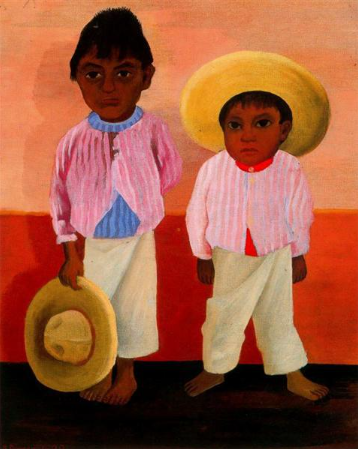
Question 20: Some concerned physicians have suggested that COVID vaccination results in vascular endothelial cells (as well as many other cells) producing spike protein, which then results in parts of spike protein appearing on the endothelial cell surface. Those physicians go on to suggest that the immune system then recognizes this spike protein material as undesirable and, accordingly, attacks the spike-protein-laden endothelial cells, thereby damaging them (via autoimmune attack). Does this actually, in fact, occur? If so: Is this an antibody-mediated/antibody-dependent attack? Does this attack involve NK cells? Does it involve spike-specific cytolytic T cells? Are all of these mechanisms potentially involved? Or do none of these attacks actually occur?
Response: There is legitimate concern that many different cell types (including endothelial cells and probably ovarian cells) make spike protein (because the mRNA vaccine has entered those cells and instructed them to do so); with fragments of spike protein then appearing on the surface of those cells; which is then followed by an immune-attack on those cells.
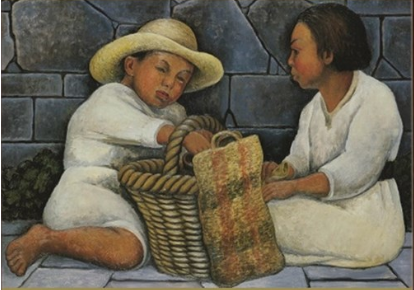
Question 21: Shortly after the vaccines were first rolled out, it was admitted that they did not prevent infection or transmission, but they “reduced disease severity, hospitalization, and death,” and the impression was given that they at least reduced infection considerably. To what extent did they actually reduce infection? Initially, did they reduce entry of virus into human cells by 95% or was it more like 10%, 30%, 50%, or what? And to what extent did this percentage change as the months went by? Is it true that now the vaccines are actually increasing infection of vaccinated people? If so, how, exactly, does that occur?
Response: When they were first studied and initially rolled out, it is unlikely that the COVID vaccines generated potentially neutralizing antibodies that were 95% effective in preventing entry of virus into human cells. It is unclear whether they reduced viral entry by 50% or by a higher or much lower percentage. Whatever this percentage was, initially, it clearly soon decreased and quite dramatically so, as new variants evolved and the original neutralizing antibodies became decreasingly neutralizing. Now vaccinal non-neutralizing antibodies are actually facilitating entry of virus into cells, as explained under Question 5.
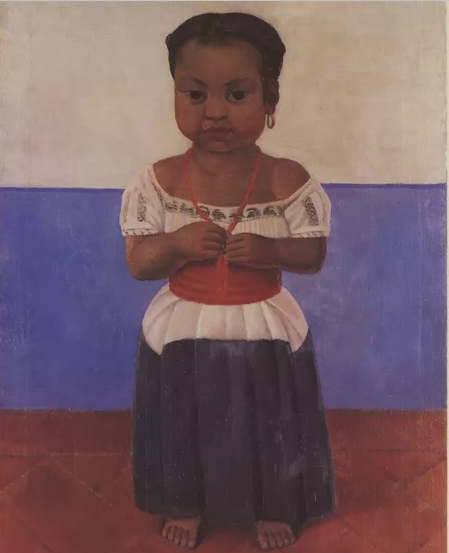
Question 22: Since the initial roll-out of the vaccines, it has been claimed that the vaccines “reduce severity of disease”—i.e., decrease hospitalization, decrease ICU admission, and decrease incidence of death. To what extent have the vaccines truly reduced disease severity—by what percentage? How convincing have the data been on this? To what extent has this “protection against severe disease” changed over time? Do the vaccines reduce disease severity in the vaccinated now, with the current variants? If so, how does this happen, if the current variant has become largely resistant to the vaccine and if the vaccine is actually making the vaccinee more susceptible to infection with that variant? Dr. Vanden Bossche has predicted that the mass vaccination campaign will, inevitably, result in the emergence of a more virulent variant that will have the capacity to bypass the current vaccine’s “protection against severe disease.” Do you think a more virulent variant will emerge, and if so, when do you think this will occur?
Response: As explained in the response to Question 5 and in a key article by Dr. Vanden Bossche: https://www.voiceforscienceandsolidarity.org/scientific-blog/predictions-gvb-on-evolution-c-19-pandemic there is a scientific explanation for the apparent “protection against disease severity” provided by the COVID vaccines. [25, 26 ] Briefly, the vaccinal non-neutralizing antibodies appear to provide this beneficial effect by impairing dendritic cell-mediated trans-infection, trans-fusion, and syncytia formation deep in the lower respiratory tract and systemic compartment. (These are the same non-neutralizing vaccinal antibodies that facilitate viral entry into cells.) This beneficial effect, however, will inevitably cease to occur, once natural selection results in predominance of variants that have developed mutations that circumvent this vaccinal benefit. That will likely happen relatively soon—in a matter of a few weeks or months.
Although the above explanation provides a scientific basis for some current vaccinal “protection against disease severity,” the actual extent of this protection in real life has been difficult to know—because, throughout the pandemic, the quality of data collection has, unfortunately, been very poor.
Question 23: The vaccine manufacturers state that, with the mRNA platform, it will be easy for them to develop a new, updated vaccine to match each latest variant. Do you think this is a wise strategy? Will it not lead to forever dependency on COVID vaccines and escalation and exacerbation of the problem Dr. Vanden Bossche has foreseen?
Response: One problem with this strategy is that it will be impossible to keep up with the new variants. Each new variant-specific mRNA vaccine will drive the natural selection of new variants with new escape mutations that will quickly render the most recent mRNA vaccine obsolete. This will be a never-ending battle that the virus will win.
But a more important problem with this strategy is that re-vaccination of vaccinees (and vaccination of currently unvaccinated individuals) with an “updated” spike (Omicron)-based vaccine during an active pandemic will further increase likelihood of breakthrough infections and will further increase population-level immune pressure on viral virulence. This is primarily because such vaccination increases quantities of vaccinal non-neutralizing antibodies—that, as explained earlier, enhance viral infectiousness (facilitate viral entry into cells) and increase population-level immune pressure that results in the natural selection of more virulent variants. Furthermore, repeated and frequent re-infection with new variants leads to “immune exhaustion.”
This strategy will only perpetuate and worsen the problems created by the mass COVID vaccination campaign. This strategy, therefore, must be strongly resisted.
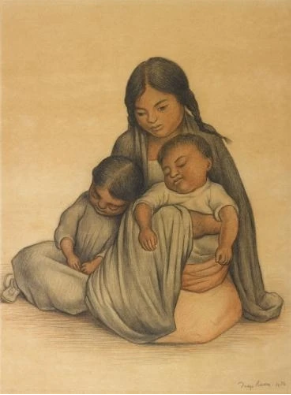
Question 24: Dr. Vanden Bossche thinks unvaccinated children are now better off than vaccinated children. If he is correct, is this also true of unvaccinated healthy adults versus healthy vaccinated adults? At this point in the pandemic, are the vulnerable (the elderly, the immunosuppressed, and the otherwise more vulnerable) also better off if they are unvaccinated or (if already vaccinated) if they avoid further vaccination (boosters)?
Response: For the reasons discussed earlier, it is highly likely that unvaccinated healthy adults are better off than vaccinated healthy adults. For the reasons explained in the response to Question 11, vulnerable adults (the vulnerable elderly and the otherwise more vulnerable) are also better off if unvaccinated. The bottom line is that even vulnerable adults will likely be better off if they remain unvaccinated (if they have not been vaccinated to date) or if they receive no further vaccination (if they have already received some vaccination). This is true currently (with current Omicron variants) and will be even more true once a more virulent variant appears. In either case, even these vulnerable adults will likely be better off relying on what natural innate immunity and normal overall immunity they will be able to muster. In either case, the detrimental effects of COVID vaccination appear to outweigh any putative beneficial effects.
Question 25: At the beginning of the pandemic, many physicians favored selective COVID vaccination of the elderly and vulnerable, including immunosuppressed children and adults, as opposed to mass vaccination across all age groups. Did you agree with that, at the beginning of the pandemic? Do you think selective vaccination of the elderly and vulnerable was wise in the beginning of the pandemic? Do you think selective vaccination is wise now?
Response: At the beginning of the COVID pandemic it was appropriate to favor selective vaccination of the quite elderly and otherwise quite vulnerable, as long as a safe and effective vaccine was available. Vaccination of only a relatively small percentage of the population would not have placed tremendous immune pressure on the virus and would have left a large percentage of the population capable of developing sterilizing immunity and contributing to herd immunity (which would have further protected the vulnerable). So, at a population level, selective vaccination would have been reasonable. However, at the individual level, the COVID vaccines have turned out to be much less safe and effective than initially thought. This lack of safety (and efficacy) at the individual level suggests that, in retrospect, selective vaccination of the vulnerable might not have been wise. Again, conclusions regarding this issue are difficult to draw because of the very low quality of COVID data collection throughout the pandemic.
At this point in time, with the current variant and certainly with a future more virulent variant, it would probably not be wise to selectively vaccinate (or boost) the vulnerable—for the reasons discussed under Questions 11 and 24. This is a difficult decision, however. There are no guarantees with either decision.
Question 26: If the vaccination campaign is halted (at least for children and potentially for adults), what is left for us to do to protect children and adults from severe COVID—particularly if a new variant appears that is extremely infectious and very virulent?
Response: There are several proactive, protective actions that we can and must take:
- Thorough, accurate, scientifically sound, understandable, and demystifying patient education about COVID can be provided to parents, children, and the public as a whole—particularly regarding COVID vaccination. To date this has not adequately occurred, but this can be corrected.
- Good exercise, good nutrition (including immune-supporting nutraceuticals), fresh air, sunshine, and good emotional health (including reduction of COVID-related fear, mystery, confusion, cognitive dissonance, and anxiety) will help optimize people’s immune systems, particularly their innate immune systems.
- For those who become infected, early (and accurate) outpatient diagnosis (with disclosure of PCR Ct values and verification of COVID by genomic sequencing) and early outpatient treatment with safe anti-viral therapies will help prevent escalation of disease.
- For those who develop a hyperimmune/hyperinflammatory reaction (usually during the second and third weeks of illness, but possibly sooner with new more virulent variants) prompt and appropriately aggressive immunosuppression will be critically important.
- When a highly infectious and highly virulent variant appears, particularly in highly vaccinated communities/countries/populations, it may be necessary to treat virtually everyone who becomes infected with prompt safe anti-viral therapy, perhaps for several weeks, in an effort to thoroughly reduce the viral infectious pressure in these populations/communities and to interrupt the vicious cycle of high infectious pressure causing enhanced immune pressure on the viral life cycle and, hence, driving immune escape.
- When a highly infectious and highly virulent variant appears, particularly in highly vaccinated communities/countries/populations, it may be necessary to consider moving elderly folks (particularly those who are most vulnerable) out of nursing homes/retirement homes into single family dwellings, to the extent possible/practical.
- We must promote respectful, healthy, scientific dialogue—particularly among health care professionals, but also among citizens—dialogue and demystifying education that will elevate understanding of the COVID situation, create consensus, bring people together, and unite people in positive, constructive efforts to do what is needed to preserve lives and end this pandemic.
Question 27: Is there anything else you would like to emphasize?
Response: The problem we are currently facing—the continuing appearance of a succession of new SC-2 variants that have become increasingly infectious and will almost surely soon become devastatingly virulent, especially for the vaccinated—is profoundly, even catastrophically, serious. This problem has been created by an ill-conceived and misguided mass COVID vaccination campaign. That mass vaccination campaign must be stopped and be thoroughly re-evaluated. We must now shift to preparing for an emphasis on anti-viral therapy, using anti-viral agents with the best-known benefit/risk ratio.
It is important for parents, citizens, physicians, and health care officials to appreciate the great complexity of the COVID situation. Simplistic understandings—when not rooted in a deep appreciation of the complexities of immunology, virology, vaccinology, evolutionary biology, and epidemiology—are potentially dangerous and should be avoided. For example, the simplistic and misleading statement that the vaccines are “exceedingly safe and very effective; get vaccinated! It’s your social responsibility; our patience is growing thin!” is scientifically incorrect, dangerous, divisive, and abusive.
It is critically important that the scientists and physicians who have been responsible for the prevailing COVID narrative and its policies engage in respectful, healthy scientific dialogue with those scientists and physicians who have challenged the prevailing narrative and its policies. To date there has been very little such dialogue, despite pleas by Dr. Vanden Bossche and others for such dialogue. This must change. If Dr. Vanden Bossche is wrong in his understandings and concerns, this needs to be established through thorough scientific dialogue. If the promoters of the prevailing COVID narrative have been wrong, especially regarding their COVID vaccination campaign, this needs to be established through thorough extensive scientific dialogue.
The adverse effects that the COVID mass vaccination campaign has had on the evolutionary biology of the SC-2 virus (the predominance of more infectious and more lethal variants) is a major and sufficient reason, by itself, why children should not be vaccinated and why the entire vaccination campaign should be re-evaluated and shut down. On top of that reason are the many adverse effects the vaccines have on individuals—including the detrimental effects of vaccination on a young child’s developing innate immune system. Those side effects, on individuals, are also sufficient reason, by themselves, for not vaccinating children and re-evaluating the entire vaccination campaign.
I would like to again emphasize that I would much prefer to have the questions raised in this article answered by a representative panel of physicians and scientists with exemplary expertise in immunology, virology, vaccinology, evolutionary biology, and epidemiology who would engage in respectful scientific video-archived dialogue about these questions. Physicians, including me, need and deserve that help. Parents and physicians could then view and listen to that dialogue and decide whose explanations make the most sense and whose recommendations seem wisest.
It is important that the “vaccinated” and “unvaccinated” not be pitted against each other. This has not been a “pandemic of the unvaccinated,” nor is it helpful to view it as a “pandemic of the vaccinated.” It is a pandemic that has been prolonged and made worse by a misguided mass COVID vaccination campaign. Vaccinated and unvaccinated citizens should kindly and sensitively work together to correct the many mistakes that have been made in the management of this pandemic.
Finally, I would emphasize that parents and grandparents can play a pivotal and powerful role in challenging and reversing the ill-advised campaign to vaccinate children against COVID. In fact, protection of children from the harmful effects (both at the population level and at the individual level) of the COVID vaccination campaign will likely depend on the homework and thoughtful advocacy of parents and grandparents, since the CDC, FDA, pharmaceutical companies, NIH, WHO, AAP (American Academy of Pediatrics), conventional media (CNN, e.g.) and silent acquiescing physicians have failed to provide that protection.
ADDITIONAL QUESTIONS PHYSICIANS MIGHT WANT TO ASK THEMSELVES OR THEIR TRUSTED INFECTIOUS DISEASE SPECIALISTS/VACCINOLOGISTS:
Question 28: Do the spike-specific vaccinal antibodies get into the mucosal compartment and help fight infection in either the URT (upper respiratory tract) or the LRT (lower respiratory tract)? Or do these vaccinal antibodies stay in, or only work within, the systemic compartment? That is, are vaccinal antibodies capable of passing through the walls of the microvasculature in the URT or LRT (or otherwise getting into the mucosal tissues of the URT and/or LRT)—and, if so, does this occur to an extent that results in substantial reduction of infection and disease in the URT and/or LRT?
Question 29: Do the COVID vaccines result in production of any mucosal secretory IgA production? Do the COVID vaccines result in production of systemic spike-specific IgA antibodies, and if so, do these IgA antibodies get into either the LRT or the URT?
Question 30: We have heard a lot about ADE (Antibody Dependent Enhancement). How do we best understand what is meant (or should be meant and understood) by this term? Is it a single phenomenon, or is it an umbrella term that refers to, or can involve, a number of different immunologic mechanisms that result in increased entry of virus into cells (which cells?) and/or result in increased disease severity? What is the preferred understanding and use of the term “ADE”? To what extent has ADE been occurring in the COVID pandemic? To what extent is it likely to become a problem in the future?
Question 31: Why has it been so difficult to develop a successful and safe vaccine against respiratory viruses in general, such as RSV, the ordinary coronaviruses, and other cold viruses? Why have scientists been able to develop safe and effective vaccines against the usual childhood illnesses but not against these other viruses? Is it easier to develop vaccines against viruses that primarily threaten the systemic compartment? If so, why? Are there other reasons why it is difficult to develop vaccines against respiratory viruses? Is it difficult and/or unsafe to develop a COVID vaccine that would focus on mucosal immunity—e.g., a COVID vaccine that would be administered nasally or orally?
Question 32: What difficulties were encountered with the RSV vaccine, and why? Did the RSV vaccine work? How dangerous was it? Similarly, what problems were encountered with the Ebola vaccine and with vaccination for Dengue? How relevant are those experiences to COVID vaccination?
Question 33: Dr. Vanden Bossche has suggested that the COVID mass vaccination campaign has transformed the globe into a breeding ground for more and more infectious pandemics (pandemics of monkeypox, avian flu, RSV, as well as a new pandemic of a more virulent SC-2 variant). See the following link: https://www.trialsitenews.com/a/immuno-epidemiologic-ramifications-of-the-c-19-mass-vaccination-experiment-individual-and-global-health-consequences.-1935ddcf
Is this true, and, if so, how/why does this happen?
Question 34: According to Dr. Vanden Bossche, the COVID vaccinal antibodies “outcompete” innate antibodies for binding sites on the SC-2 virus, and the vaccinal antibodies, thereby, interfere with normal interaction between innate antibodies and the SC-2 virus. He goes on to say that this interference with normal interaction with the SC-2 virus adversely affects the overall education of the innate immune system, regarding recognition and neutralization of viruses in general and regarding distinction between “non-self” and “self.” Is this really true?
How/why would interference with interaction of innate antibodies with a specific virus (SC-2 in this case) interfere with the overall education of the innate immune system, regarding how to deal with other viruses? It makes sense that such interference could adversely affect the education of the innate immune system regarding SC-2, but why would it also affect the overall education of the innate immune system—regarding recognition and neutralization of viruses in general and regarding distinction between “non-self” and “self?”
0 Comments